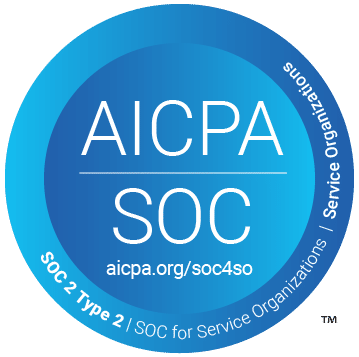Background
The Fair Credit Reporting Act (FCRA) was signed into law by President Nixon in 1970 and took effect April 25, 1971. The original purpose of the FCRA was to give consumers certain rights and protections related to the accuracy and privacy of their credit reports.
Since its enactment, there have been many amendments to the FCRA. Notably, in 1996, the FCRA was amended to include background reports prepared for employment screening purposes. These reports could include criminal history, employment and education verification, professional licensure and health care sanctions Therefore, such reports do not necessarily relate to credit information at all. FCRA applies to any employer that obtains a background check from a third party for employment purposes.
This 1996 amendment threw into question how an employer could effectively conduct an investigation of employee misconduct and remain in compliance with the FCRA. Under the FCRA, employees have certain rights to both notice and authorization for reports and background checks to be conducted. Clearly, employees being investigated by their employer would have scant reason to consent to background checks and investigations that could result in their termination. In 1999, the FTC issued an advisory opinion, known as the Vail letter, which concluded that the FCRA regulates workplace misconduct investigations conducted by third parties. Using the Vail rationale, employers would have been unable to investigate employee misconduct without prior notice and consent of the employee being investigated.
The Effect of FACTA on Exclusion Screening
On December 4, 2003, President Bush signed the Fair and Accurate Credit Transactions Act of 2003 (“FACTA”) which amended the FCRA in response to, among other things, the Vail advisory opinion letter. Title VI of the FACTA states:
SEC. 611. CERTAIN EMPLOYEE INVESTIGATION COMMUNICATIONS EXCLUDED FROM DEFINITION OF CONSUMER REPORT.
(a) IN GENERAL. Section 603 of the Fair Credit Reporting Act (15 U.S.C. 1681a), as amended by this Act is amended by adding at the end the following:
“(x) EXCLUSION OF CERTAIN COMMUNICATIONS FOR EMPLOYEE INVESTIGATIONS.
(1) COMMUNICATIONS DESCRIBED IN THIS SUBSECTION. A communication is described in this subsection if:(A) but for subsection (d)(2)(D), the communication would be a consumer report;
(B) the communication is made to an employer in connection with an investigation of:
(i) suspected misconduct relating to employment; or
(ii) compliance with Federal, State, or local laws and regulations, the rules of a self-regulatory organization, or any preexisting written policies of the employer;
(C) the communication is not made for the purpose of investigating a consumer’s credit worthiness, credit standing, or credit capacity; and
(D) the communication is not provided to any person except:
(i) to the employer or an agent of the employer;
(ii) to any Federal or State officer, agency, or department, or any officer, agency, or department of a unit of general local government;
(iii) to any self-regulatory organization with regulatory authority over the activities of the employer or employee;
(iv) as otherwise required by law”
The question arises whether FACTA effectively protects both exclusion screening organizations and their clients from liability under FCRA if an employer screens its employees and contractor names against federal or state exclusion databases without prior notice or consent. There has been no explicit guidance from the HHS-OIG on this question. However, based on the FACTA exclusion language shown above, there is a strong argument that it does.
A 2013 report from Littler Mendelson supports this interpretation:
Exemptions under FACTA included not only misconduct investigation reports, but also any reports used for “investigation” into “compliance with Federal, State, or local laws and regulations, the rules of a self-regulatory organization, or any preexisting written policies of the employer,” provided that the reports were not ordered for the purpose of investigating the employee’s credit worthiness, credit standing, or credit capacity.
As result, reports that meet the FACTA exemption do not require employers to necessarily follow their many obligations under the FCRA, like getting consent from the subject of the investigation or providing the individual with a written copy of the report.
One reason that the FACTA may provide some protection to employers from background check litigation is that it does not define several of its key terms. For example, there is no specific definition for what constitutes an employer “investigation” prerequisite. Likewise, the FACTA doesn’t limit the pre-existing written employment policies that would trigger an investigation, nor does it address in detail how and when a summary of the nature and substance of the resulting report be distributed.
Given the lack of specificity, there may be room for interpretation of the FACTA that could give employers some protection in litigation related to violations of the FCRA during a background check.
The FACTA exclusion has been tested in several court decisions. The most relevant to health care exclusion screening required under federal law is a federal district court case, Martin v. First Advantage Background Services Corp., 30 877 F. Supp. 2d 754 (D. Minn. July 13, 2012).
In this case, the court considered whether routine criminal background check audits qualified for exclusion from the definition of “consumer report” under the FACTA as investigation of compliance with laws and regulations. The plaintiff in Martin had been previously employed by the defendant Wells Fargo. The employer later rehired him and thereafter ran a background check which disclosed offenses that had not been listed on the plaintiff’s previous background checks during his prior employment with the company. The plaintiff’s employment was terminated. The plaintiff sued, claiming violations of the FCRA.
Wells Fargo defended its actions by asserting that the background check was used to investigate the plaintiff’s compliance with federal laws and regulations governing individuals who are permitted to work for financial institutions. The employer argued that the FACTA would exempt the employer from the requirements of the FCRA that the plaintiff claimed were violated. The plaintiff countered that the court should construe the FACTA’s exemptions to apply only to investigations of employee misconduct that was already suspected by the employer.
Based on the plain language of the FACTA, the court held for the employer.
Conclusion
Martin is a federal district court case and therefore not binding precedent. However, the reasoning is particularly relevant to employers, such as health care and school employers who are prohibited from hiring or retaining individuals or entities who have been convicted of certain offenses. Based on the rationale of Martin, health care employers have a strong argument that they may conduct routine screenings, such as exclusion screenings mandated by state and federal law, with some confidence that they are not running afoul of the FCRA. We highly recommend that employers who have questions about this guidance should seek legal counsel relevance of the FACTA exclusion which is highly dependent on the facts of each case.



































